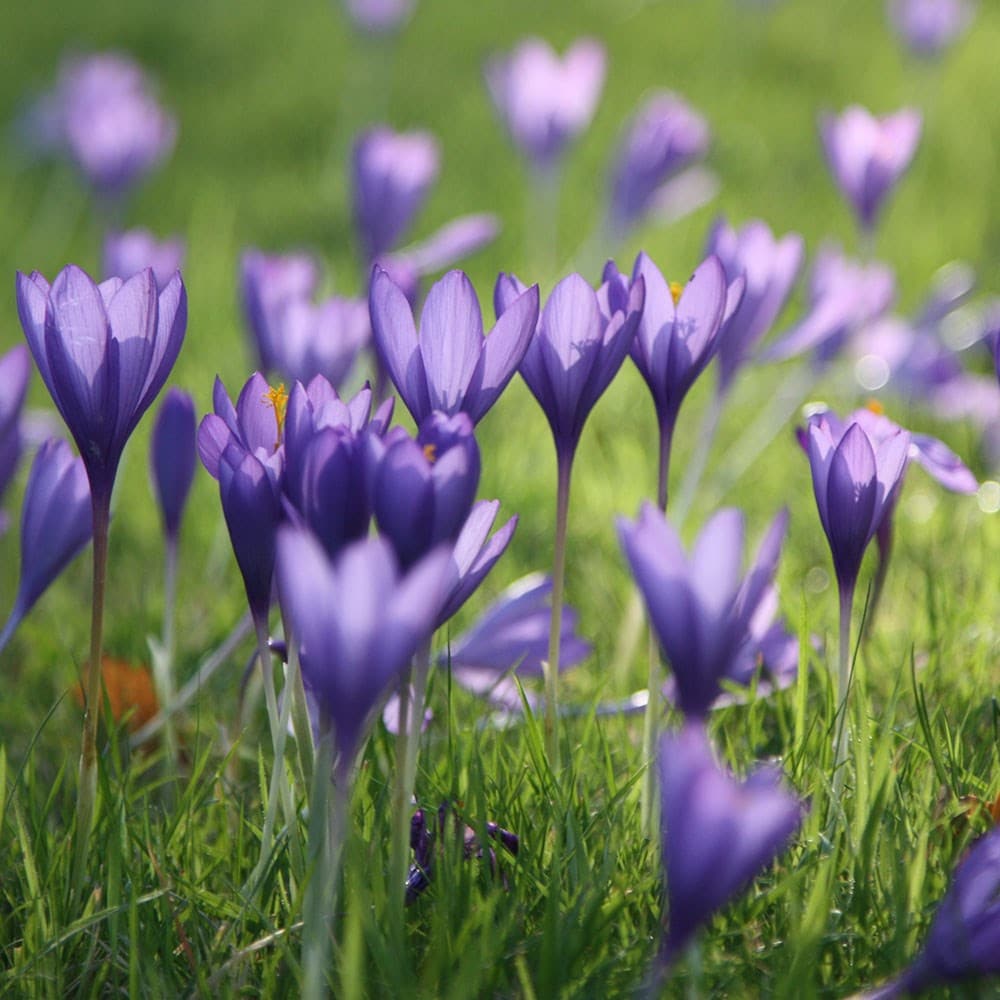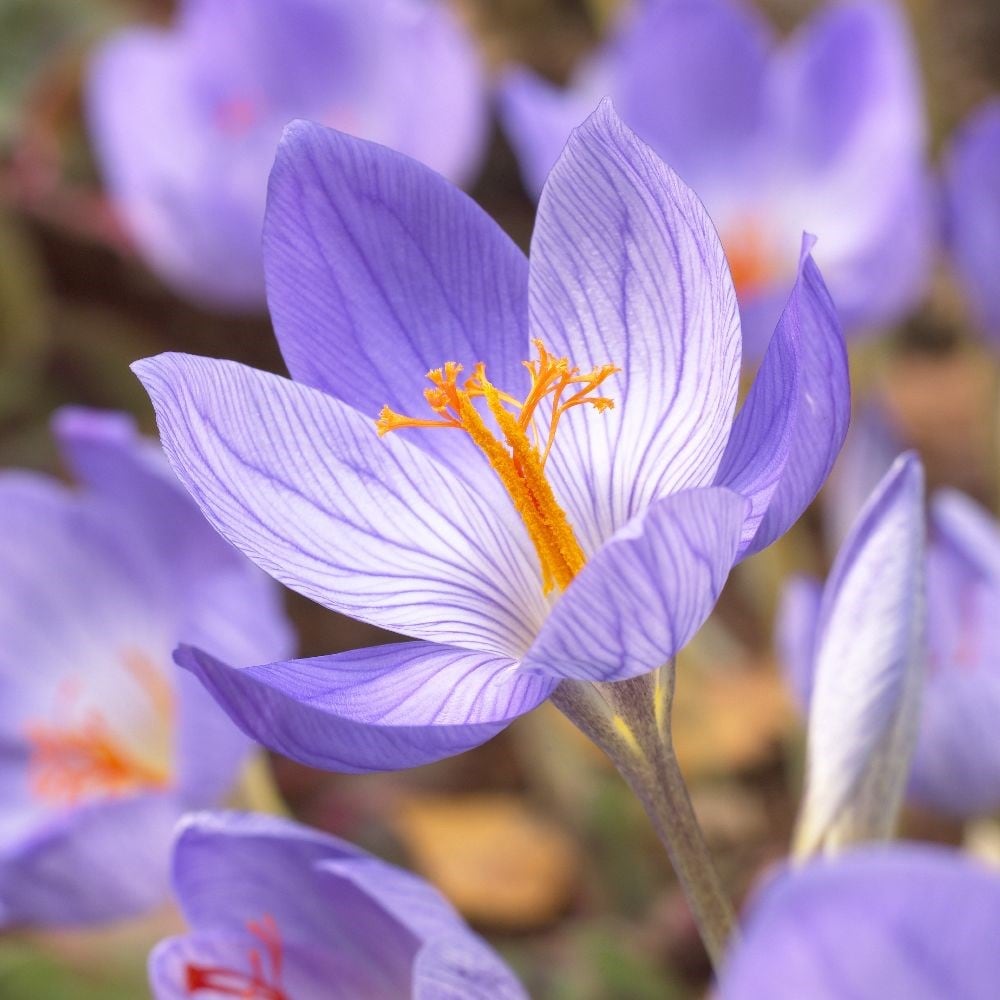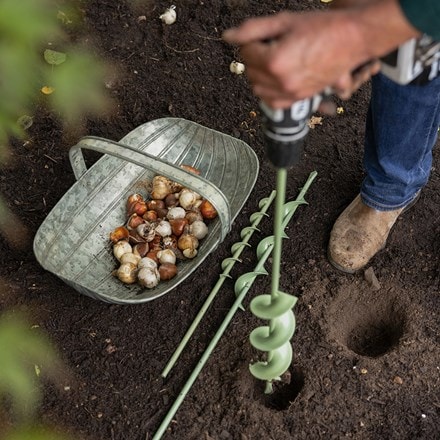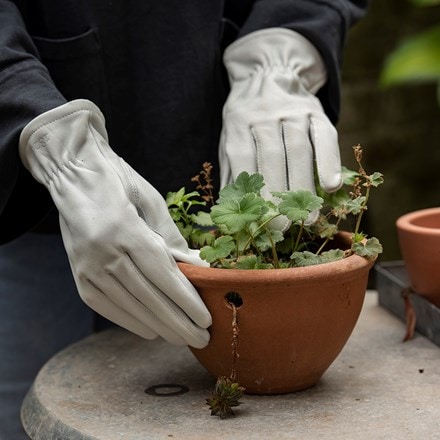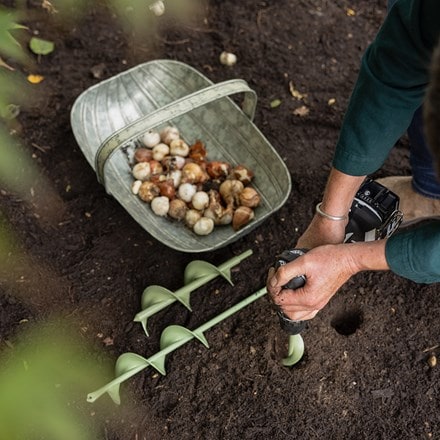Autumn-flowering crocus collection
crocus collection
- 1 × collection | 30 bulbs
- £14.99
- available to order from autumn 2024
- 2 + 1 FREE collections | 90 corms
- £29.98
- available to order from autumn 2024
Delivery options
- Bulbs (only) £4.95
- Position: Full sun
- Soil: Poor to moderately fertile, well-drained soil
- Flowering period: September to November
- Hardiness: Fully hardy
- 15 x Crocus speciosus: A stunning and very beautiful crocus with goblet-shaped, light blue-mauve flowers that open out to show delicate dark veining on the petals. They appear from September to November and are followed by narrow, mid-green leaves. This popular autumn flowering crocus is ideal for naturalising in a sunny border among deciduous shrubs or for scattering through the lawn. Often the earliest autumn crocus to bloom, it soon increases to form large colonies. Received the coveted Award of Garden Merit from the Royal Horticultural Society. Grows to 15cm.
- 10 x Crocus speciosus 'Conqueror': Very beautiful, goblet shaped flowers are breathtaking with the striking orange stamens contrasting with the rich violet-blue flowers that appear from late September to late October. Grows to 15cm.
- 5 x Crocus speciosus 'Albus': Enchanting, pure white flowers. This cultivar is more rarely available than the species, but its white flowers look stunning. Flowers appear from September to November. It has also received the Award of Garden Merit from the RHS. Grows to 15cm.
- Garden care: Plant bulbs in naturalistic drifts 10cm (4in) deep.Crocus speciosus tends to flower in early autumn, so if bulbs are planted from mid-summer to early autumn, they will usually bloom in their first year. Alternatively, if planted from mid- to late autumn, they typically won’t flower until the following year, however they will often have shoots (and possibly spent flowers) already present. In this case, keep the shoots intact, but plant the bulbs at the normal depth. The shoots may extend above the soil level, but the bulbs will continue to flourish, and fall into a normal growth pattern in subsequent years. Where bulbs are planted in grass do not cut the lawn until after the leaves have died back.
As soon as the crescendo of summer flowers are coming to an end in the garden, autumn flowering crocus are waiting to burst into flower. Crocus speciosus is a species that is very showy and is my favourite autumn crocus. They look fabulous planted in grass.
Each collection comprises of:
- Humans/Pets: Ornamental bulbs - not to be eaten

